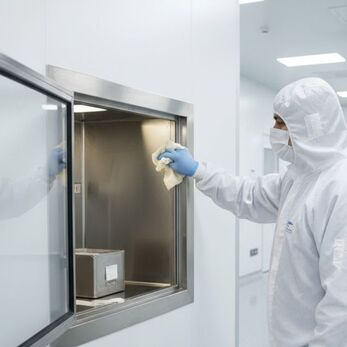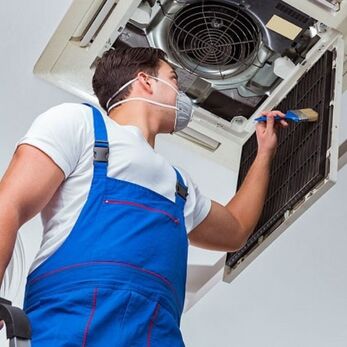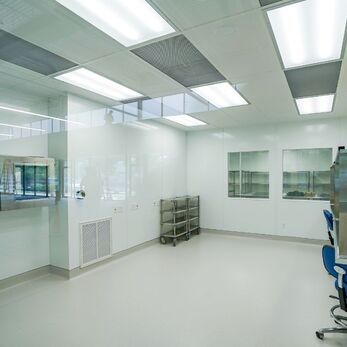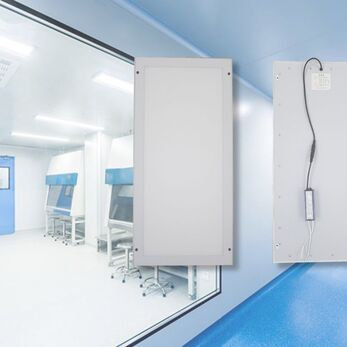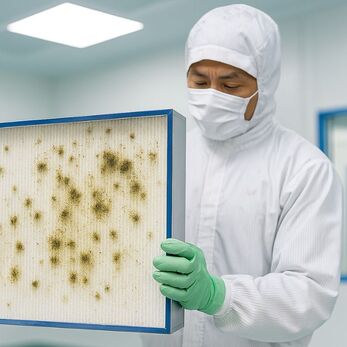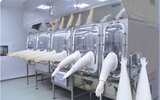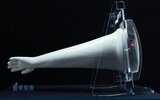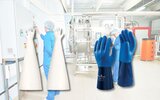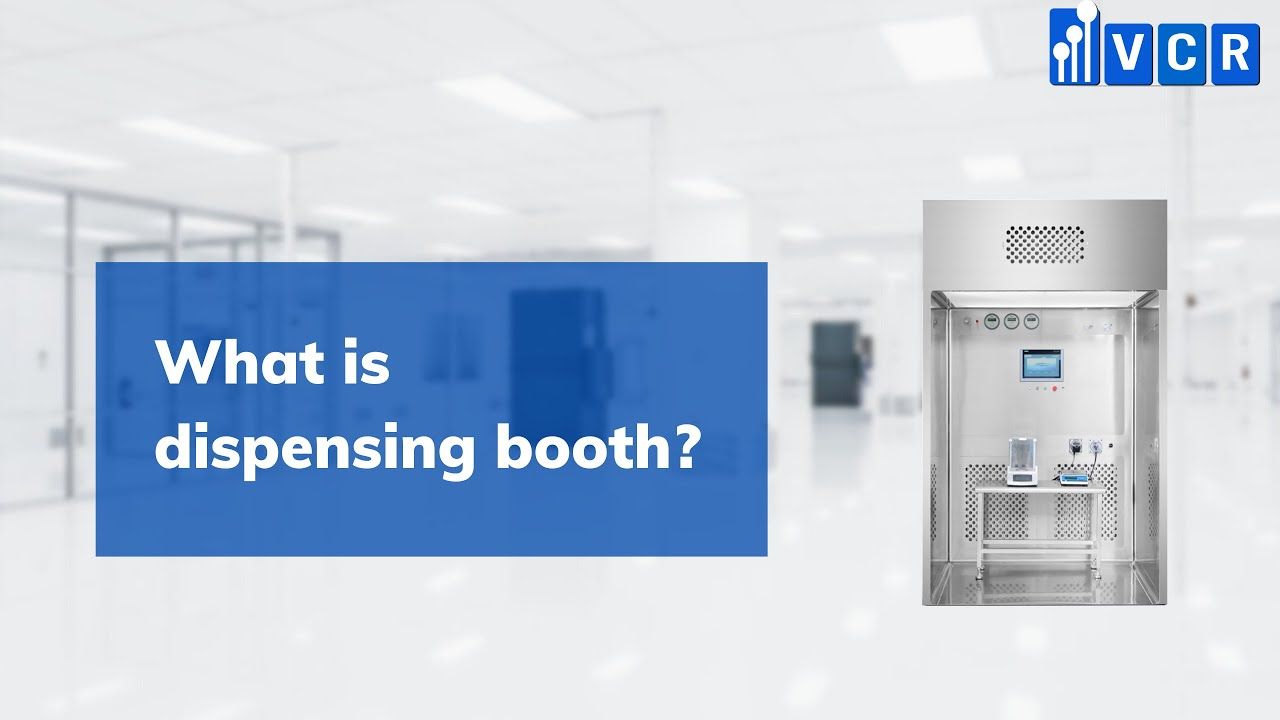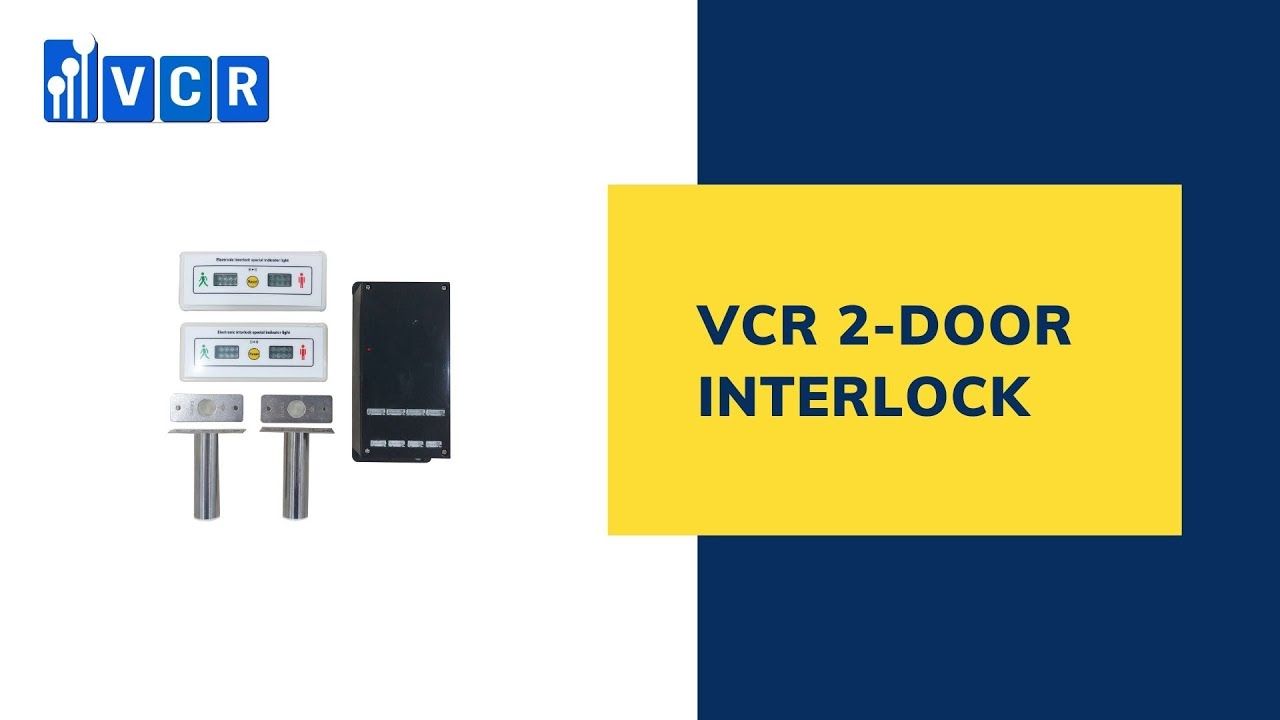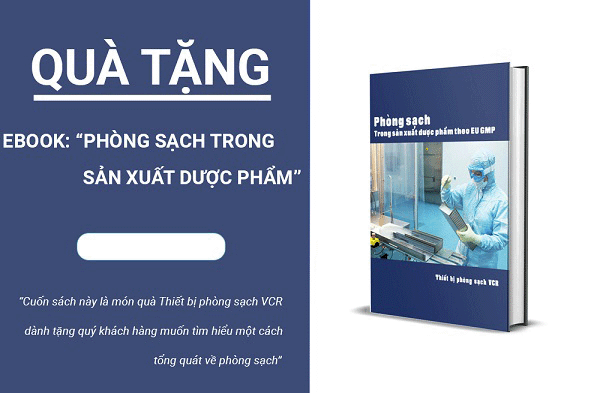Standard TCVN 7395-1:2004 – Foundation of clean rooms used in medicine
TCVN 7395-1 standard is an important technical foundation for the design and inspection of medical cleanrooms in Vietnam. Based on ISO 14644-1, this standard specifies the classification of air cleanliness, helping hospitals, laboratories and medical equipment factories maintain sterile environments that meet international standards.
- I. Overview and Importance
- II. Overview of the TCVN 7395-1:2004 Standard
- III. Structure and Key Content of TCVN 7395-1:2004
- IV. Practical Applications in the Medical Field
- VI. Common Mistakes When Implementing the TCVN 7395-1:2004 Standard
- VII. Frequently Asked Questions
- VIII. Contact VCR for Consultation and Support
I. Overview and Importance
In the medical field-where even the smallest error can directly impact human health and safety-a clean environment is essential. In Vietnam, TCVN 7395-1:2004 is regarded as the foundational technical standard that establishes clear regulations for cleanrooms used in healthcare, harmonizing design, construction, and validation processes with international best practices.
TCVN 7395-1:2004 is the Vietnamese adaptation of ISO 14644-1:1999, defining air cleanliness classes based on the concentration of airborne particles. This standard serves not only as a technical document but also as a “common language” that allows medical organizations, contractors, validation bodies, and authorities to assess air cleanliness under a unified framework.
For hospitals, it ensures operating rooms, ICUs, and isolation wards maintain proper air cleanliness and pressure to prevent cross-contamination.
For microbiological and biological laboratories, it provides a basis for controlling airborne particles to avoid contamination that could affect test results.
For medical device and material manufacturers, compliance with TCVN 7395-1:2004 is a prerequisite for certification such as GMP, ISO 13485, or CE Mark, enabling their products to be distributed domestically and internationally.
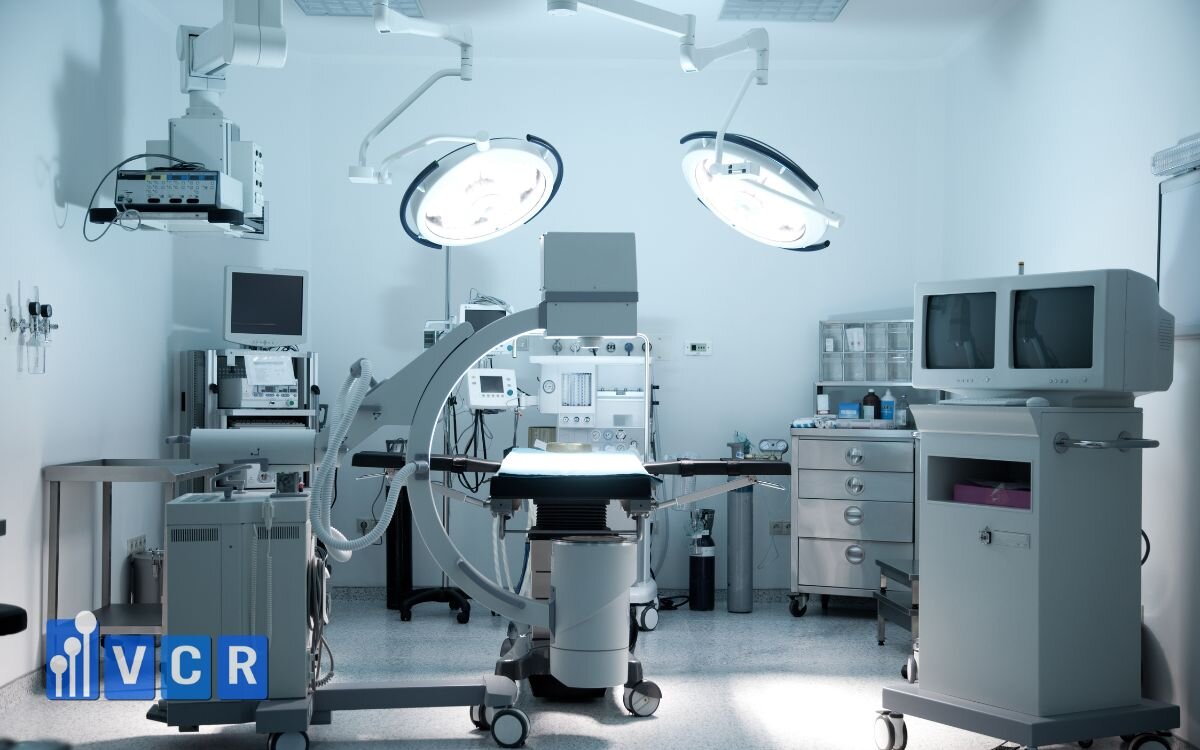
In essence, TCVN 7395-1:2004 represents the “cornerstone” of Vietnam’s cleanroom standards for healthcare-guiding every step from design and installation to operation and inspection.
This article will help you understand the core content, scope, structure, and practical applications of TCVN 7395-1:2004-and why it has become an indispensable benchmark for all cleanroom projects in the medical sector.
II. Overview of the TCVN 7395-1:2004 Standard
TCVN 7395-1:2004 is one of the most important technical documents in Vietnam’s cleanroom regulatory framework, especially in the medical and pharmaceutical industries. It is an equivalent conversion of the international standard ISO 14644-1:1999, issued by the International Organization for Standardization (ISO) to unify global methods for classifying air cleanliness in cleanrooms and controlled environments.
1. Origin and significance of the conversion
The publication of TCVN 7395-1:2004 marks Vietnam’s commitment to global quality alignment in healthcare and manufacturing. The standard was developed by experts in validation, HVAC engineering, and quality management under the direction of the Directorate for Standards, Metrology, and Quality (STAMEQ), maintaining the original intent and methods of ISO 14644-1 while adapting to Vietnamese practical conditions.
As a result, hospitals, laboratories, and manufacturers in Vietnam can apply a consistent classification and measurement system, ensuring that results are globally comparable and recognized.
2. Scope of application
TCVN 7395-1:2004 is widely applied in environments requiring strict control of airborne particles, microorganisms, and air cleanliness, including:
- Healthcare: operating rooms, ICUs, isolation wards, infusion preparation rooms, sterile areas.
- Pharmaceuticals: weighing, mixing, capsule filling, blister packing, and final packaging zones.
- Microbiology and laboratory testing: sample culture rooms, microbial testing rooms, sterile work areas.
- Medical device manufacturing: molding, assembly, and packaging of syringes, bandages, catheters, and surgical masks.
It is also indirectly referenced in other quality frameworks such as GMP, ISO 14698 (microbial control), and ISO 13485 (medical device quality management).
3. Main objectives of the standard
TCVN 7395-1:2004 is built around three core technical objectives:
- Air cleanliness classification:
Based on the number of airborne particles per cubic meter, in particle sizes ranging from 0.1 µm to 5 µm.
The standard defines classes from ISO Class 1 to ISO Class 9, identifying the appropriate environment for each type of process. - Measurement, testing, and evaluation methods:
Defines sampling points, air volume requirements, and equipment specifications (Particle Counters).
Includes formulas to ensure statistical reliability in air cleanliness assessments. - Technical foundation for design, construction, and validation:
Guides HVAC engineers, contractors, and validation agencies in determining the required cleanliness class, selecting filters, airflow design, pressure differentials, and operational procedures.
Xem thêm: What is WHO GMP?
III. Structure and Key Content of TCVN 7395-1:2004
TCVN 7395-1:2004 is organized in a clear, practical manner, making it accessible to professionals ranging from HVAC engineers and QA/QC personnel to cleanroom operators. Its core content is divided into three main parts, corresponding to the lifecycle of a cleanroom: classification - measurement - validation.
1. Part 1 - Classification of air cleanliness by particle concentration
This section focuses on the ISO Class air cleanliness table, identical to that of ISO 14644-1. Each class (from ISO 1 to ISO 9) is defined by the number of particles per cubic meter of air, measured at specified particle sizes.
|
ISO Class |
≥0.1 µm |
≥0.5 µm |
≥5.0 µm |
|
ISO 5 |
100,000 |
3,520 |
29 |
|
ISO 6 |
1,000,000 |
35,200 |
293 |
|
ISO 7 |
352,000 |
2,930 |
29,300 |
|
ISO 8 |
3,520,000 |
29,300 |
293,000 |
(Data from ISO 14644-1:1999 - for reference purposes)
Particle sizes are categorized to match the specific cleanliness requirements of different applications:
- ≥0.1 µm: extremely high cleanliness (used in electronics or advanced microbiological research).
- ≥0.5 µm: the standard measurement in medical and pharmaceutical environments.
- ≥5 µm: larger particles that may cause physical or microbial contamination.
Examples:
- A standard operating room typically meets ISO 7 or ISO 8.
- A pharmaceutical mixing or filling room often requires ISO 5-6 to maintain sterility.
2. Part 2 - Methods of measurement and sampling
This section provides guidance on how to measure and verify air cleanliness, ensuring uniform and objective results.
- Measurement equipment:
The standard specifies the use of a Particle Counter with sensitivity to 0.1 µm or 0.5 µm, calibrated regularly according to ISO 21501. - Number of sampling points:
Determined based on the floor area (A) using the formula:
Number of sampling locations = √A,
where A is in square meters, rounded up to the nearest integer.
Examples: - 36 m² room → √36 = 6 → 6 sampling points
- 100 m² room → √100 = 10 → 10 sampling points
- Sample air volume:
Each location must collect at least 1 liter of air, or enough to achieve statistical reliability as required by the standard. - Sampling layout:
Points must be evenly distributed throughout the room, avoiding corners, walls, or areas affected by turbulent airflow.
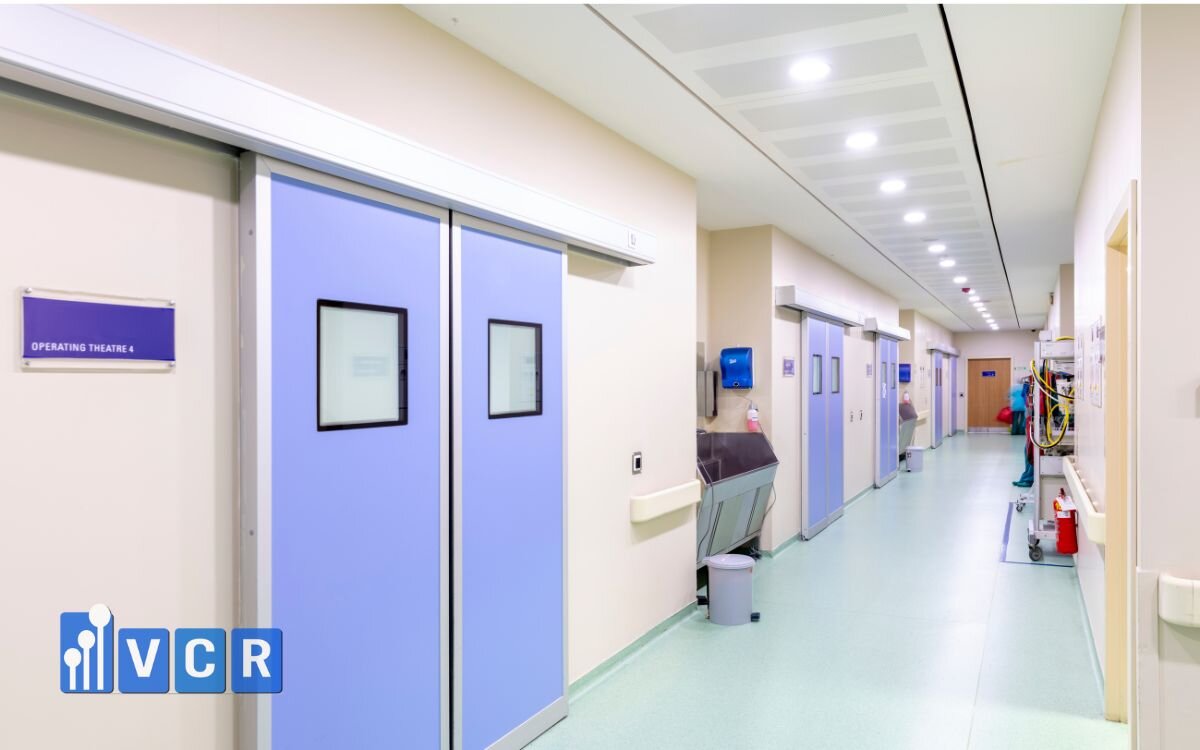
3. Part 3 - Testing conditions
To reflect real operational conditions, TCVN 7395-1:2004 defines three testing states, each corresponding to a different phase of cleanroom use:
- As-built:
The room is complete but no equipment or personnel are present.
→ Used to verify construction quality and airflow performance.
Example: After installing FFUs, HEPA boxes, and interlocking doors. - At-rest:
Equipment is installed, systems are running, but no personnel are present.
→ Evaluates whether the HVAC system can maintain cleanliness when ready for operation.
Example: A compounding room with HVAC active but no operator inside. - Operational:
The room is fully functional, with staff and processes ongoing.
→ Represents the most realistic condition for overall performance assessment.
Example: An operating theater during surgery or a sterile filling room during production.
Each state yields different particle counts. Testing across all three ensures the cleanroom can maintain stable performance and long-term compliance.
In summary, the structure of TCVN 7395-1:2004 provides not only a guideline but also a mandatory verification framework-ensuring that every cleanroom, from hospitals to laboratories, operates within defined, measurable, and internationally recognized standards.
IV. Practical Applications in the Medical Field
The TCVN 7395-1:2004 standard is not merely a technical document - it has become a guiding framework for the design, construction, and validation of cleanrooms used in healthcare facilities across Vietnam. Every element in hospitals, factories, or research centers - from airflow and pressure differentials to equipment layout and operational procedures - reflects the influence of this standard.
Below are the most notable real-world applications:
1. In hospitals - Ensuring sterility and preventing cross-contamination
In hospitals - particularly in operating theaters, ICUs, isolation rooms, and microbiology laboratories - TCVN 7395-1:2004 defines the minimum cleanliness level required to safeguard both patients and medical staff.
- Operating rooms and ICUs:
- Classified between ISO 7 and ISO 8, corresponding to a maximum particle concentration of ≤352,000 particles/m³ (≥0.5 µm).
- HVAC systems are designed with unidirectional (laminar) airflow, ensuring clean air flows downward from the ceiling to the operating area and exits outward.
- Maintain a positive pressure differential of 10-15 Pa between the operating room and the corridor to prevent contaminated air from entering.
- Microbiology laboratories:
- Typically maintained at ISO 6-7, controlling both dust particles and microorganisms.
- Airflow must move from cleaner zones (sample preparation) to less clean zones (sample analysis) to prevent cross-contamination.
- HEPA H14 filters are installed at air supply points, ensuring filtration efficiency of ≥99.995%@0.3 µm.
Proper application of this standard significantly improves air quality in hospitals - reducing post-surgical infection rates, enhancing biosafety, and increasing clinical performance.

2. In medical device and pharmaceutical manufacturing - A prerequisite for international certification
In the pharmaceutical and medical device industries, adherence to TCVN 7395-1:2004 is not just a technical requirement - it is a mandatory condition for achieving certifications like GMP, ISO 13485, or CE Mark.
- Pharmaceutical manufacturing plants:
- Injection and infusion compounding rooms must meet ISO 5-6, equivalent to Class A or B in EU-GMP.
- All processes - weighing, mixing, filling, and packaging - must occur in areas with validated air cleanliness levels.
- HVAC systems must maintain positive pressure gradients (10-20 Pa) between adjacent rooms to prevent reverse contamination.
- Medical device manufacturing facilities:
- Molding, assembly, and packaging zones for products such as syringes, catheters, bandages, and masks must maintain ISO 7-8 cleanliness.
- When applying for ISO 13485 certification, facilities must submit air cleanliness zoning and airflow diagrams designed according to TCVN 7395-1:2004 or ISO 14644-1.
- Recommended environmental parameters include temperature (20-25°C), humidity (45-65%), and air velocity (0.3-0.45 m/s) to ensure stable material conditions.
By implementing this standard, manufacturers not only achieve compliance but also enhance competitiveness, improve product reliability, and expand access to demanding markets such as the EU, the United States, and Japan.
3. In laboratories and research centers - Ensuring accuracy and safety
In microbiology, molecular biology, and pharmaceutical research laboratories, controlling airborne particles and microorganisms is vital to ensure reliable analytical results and biosafety.
TCVN 7395-1:2004 enables laboratories to establish:
- Stable laminar airflow, minimizing sample contamination.
- Positive or negative pressure differentials, depending on the type of experiment (negative for hazardous samples, positive for sterile operations).
- Environmental control of temperature, humidity, and pressure to maintain data accuracy and sample stability.
Example:
In a pharmaceutical lab, the solvent handling zone (where volatile organic compounds are used) is designed with negative pressure (-10 Pa) to contain fumes, while the sterile handling area maintains positive pressure (+15 Pa) to protect samples from external contamination.
Through these applications, TCVN 7395-1:2004 has proven to be a practical and comprehensive foundation for cleanroom management in Vietnam’s healthcare sector. It ensures that every hospital, factory, and laboratory operates under consistent, measurable, and internationally recognized air cleanliness standards - safeguarding both product integrity and human safety.
See more: What 're the differences between WHO GMP and PIC/S GMP?
VI. Common Mistakes When Implementing the TCVN 7395-1:2004 Standard
Although TCVN 7395-1:2004 has become a mandatory reference for the design and operation of medical cleanrooms, many projects still apply it incorrectly or inconsistently in practice. As a result, some cleanrooms fail to meet validation requirements or lose performance stability after a short period of operation.
Below are four of the most common mistakes that organizations should pay special attention to avoid repeating during implementation.
1. Misunderstanding the difference between “pharmaceutical cleanrooms” and “medical cleanrooms”
This is the most frequent error during the planning or initial design stage. Many assume that pharmaceutical cleanrooms and medical cleanrooms are the same, and thus apply the same ISO classification and operating procedures.
In reality, the two types of cleanrooms have different objectives and technical requirements:
|
Criteria |
Pharmaceutical Cleanroom |
Medical Cleanroom |
|
Objective |
Control dust and microorganisms to ensure the quality of drugs, infusions, and biological products |
Maintain sterility and biosafety for patients and medical staff |
|
Common Cleanliness Level |
ISO 5-7 (EU-GMP Class A-C) |
ISO 7-8 (operating rooms, ICUs, isolation areas) |
|
Pressure Type |
Positive 10-20 Pa (from clean to less clean areas) |
Positive or negative, depending on zone (e.g., negative for infectious areas) |
|
Validation Framework |
Related to GMP, WHO, FDA |
Related to ISO 14644 and Vietnam’s Ministry of Health |
Applying the wrong standard can result in unnecessary investment costs without meeting the functional requirements-or conversely, achieving insufficient cleanliness levels to ensure patient safety.
2. Failure to recheck particle concentration after equipment installation
A critical mistake is assuming that air cleanliness only needs to be measured once-at the time of handover.
In reality, TCVN 7395-1:2004 requires airborne particle concentration testing and revalidation whenever any modification is made to the system, including:
- Adding new equipment (FFU, HEPA Box, Air Shower, etc.)
- Adjusting airflow direction or differential pressure
- Performing major maintenance, repairs, or cleaning
Neglecting this step often causes gradual degradation in cleanliness levels, even when the system appears to operate normally.
Failure to conduct regular inspections can also lead to GMP or ISO validation failures, resulting in costly remediation.
3. Ignoring the “At-rest” state during cleanliness evaluation
Many facilities only assess air cleanliness in two conditions:
- As-built: when construction is completed and no equipment is installed.
- Operational: when personnel and processes are active.
However, TCVN 7395-1:2004 clearly requires three testing conditions: As-built - At-rest - Operational.
Among these, At-rest (equipment installed but no personnel present) is a critical intermediate stage that helps determine:
- Whether the HVAC system can maintain required cleanliness before use.
- Whether installed equipment generates particles or disrupts airflow.
- The true efficiency of air filtration and distribution systems.
Ignoring the “At-rest” condition means lacking the basis for evaluating system stability, which can result in invalid or unrecognized test reports in international audits.
4. Failure to update to the new ISO version (ISO 14644-1:2015)
While TCVN 7395-1:2004 was built upon ISO 14644-1:1999, the updated ISO 14644-1:2015 introduced significant revisions.
Failing to adopt these updates leaves many companies technically outdated, particularly when pursuing international certification.
Key differences between the 1999 and 2015 versions include:
- Sampling point calculation now considers both room volume and airflow complexity, rather than floor area alone.
- Large particle limits (≥5 µm) have been removed for higher classes (ISO 1-5).
- Sampling methodology is now risk-based, allowing more flexibility according to environmental conditions.
To stay current in validation practices, facilities should:
- Reference both TCVN 7395-1:2004 and ISO 14644-1:2015 concurrently.
- Update testing, calibration, and reporting procedures to meet the latest requirements.
- Retrain technical personnel on new international cleanroom standards.
VII. Frequently Asked Questions
This section compiles the most common questions from engineers, QA/QC specialists, contractors, and hospital administrators when applying TCVN 7395-1:2004. These FAQs provide quick insights into proper implementation, helping avoid errors and saving time during cleanroom design, validation, and operation.
1. Is TCVN 7395-1:2004 different from ISO 14644-1?
→ No. Technically, TCVN 7395-1:2004 is an equivalent adaptation of ISO 14644-1:1999, translated and republished by Vietnam with localized terminology and referencing.
The only differences lie in language and citation format (e.g., “phòng sạch” for “cleanroom,” “nồng độ hạt bụi” for “particle concentration”).
In terms of methodology, calculations, and ISO Class classification, both standards are identical.
Note: For international submissions or GMP-WHO audits, it is recommended to cite both versions:
“According to TCVN 7395-1:2004 (equivalent to ISO 14644-1:1999).”
2. What is an ISO Class 7 cleanroom under this standard?
→ An ISO 7 cleanroom is an environment with a maximum particle concentration of ≤352,000 particles/m³ (≥0.5 µm) under standard testing conditions.
This class is typically used for:
- Advanced operating rooms, organ transplant areas, and ICUs.
- Sterile compounding and filling zones in pharmaceutical production.
- Precision medical device assembly areas, such as syringe or catheter production.
An ISO 7 room must feature HEPA H14 filters (≥99.995%), maintain positive pressure of 10-15 Pa, and ensure laminar airflow velocity of 0.3-0.45 m/s.
If you enter a properly maintained ISO 7 cleanroom, you will not see any airborne dust even under bright light-a testament to its true cleanliness.
3. How often should cleanliness be revalidated?
→ According to TCVN 7395-1:2004 and ISO 14644-2, air cleanliness should be tested every 6-12 months using a calibrated Particle Counter.
Additional testing is required whenever system changes occur, such as:
- Replacement of HEPA filters, FFUs, or AHUs.
- Modifications to airflow, partitions, or doors.
- Technical incidents (power failure, flooding, prolonged HVAC shutdown).
Periodic revalidation is essential not only to maintain ISO compliance but also to meet GMP, WHO, and FDA inspection requirements, ensuring long-term operational safety and effectiveness.
A compliant cleanroom is not “clean on handover day”, but one that sustains cleanliness throughout its entire operational life.
4. Can this standard be applied to dental clinics or private medical practices?
→ Yes, with appropriate adaptation.
For dental clinics-especially implant surgery or oral and maxillofacial units-this standard helps design clean air supply systems that prevent patient-staff cross-contamination.
For outpatient or minor surgical clinics, cleanliness levels equivalent to ISO 8 or ISO 9 may be applied, combining HEPA filtration and basic positive pressure systems to create localized sterile zones.
While not mandatory under national regulations, applying TCVN 7395-1:2004 in dental, cosmetic, or private surgical facilities enhances professional image and patient safety, strengthening public trust and elevating the brand’s credibility.
VIII. Contact VCR for Consultation and Support
VCR is a leading provider of cleanroom design, construction, and validation services in accordance with TCVN 7395-1:2004.
With over 10 years of experience in pharmaceutical, medical, and biotechnology cleanroom projects, VCR has supported hundreds of hospitals, laboratories, and factories nationwide in achieving GMP, ISO, and WHO compliance.
VCR delivers not only equipment but also comprehensive turnkey solutions-from consultation, design, and installation to calibration and certification-ensuring that your cleanroom system meets international standards from the very first inspection.
Contact us for technical consultation and a free quotation:
Hotline: 090.123.9008
Email: [email protected]
Website: https://vietnamcleanroom.com/
Or download the full TCVN 7395-1:2004 standard (PDF) from our official website
VCR - We don’t just build cleanrooms; we build trust and safety standards for Vietnam’s healthcare industry.
Diep VCR










